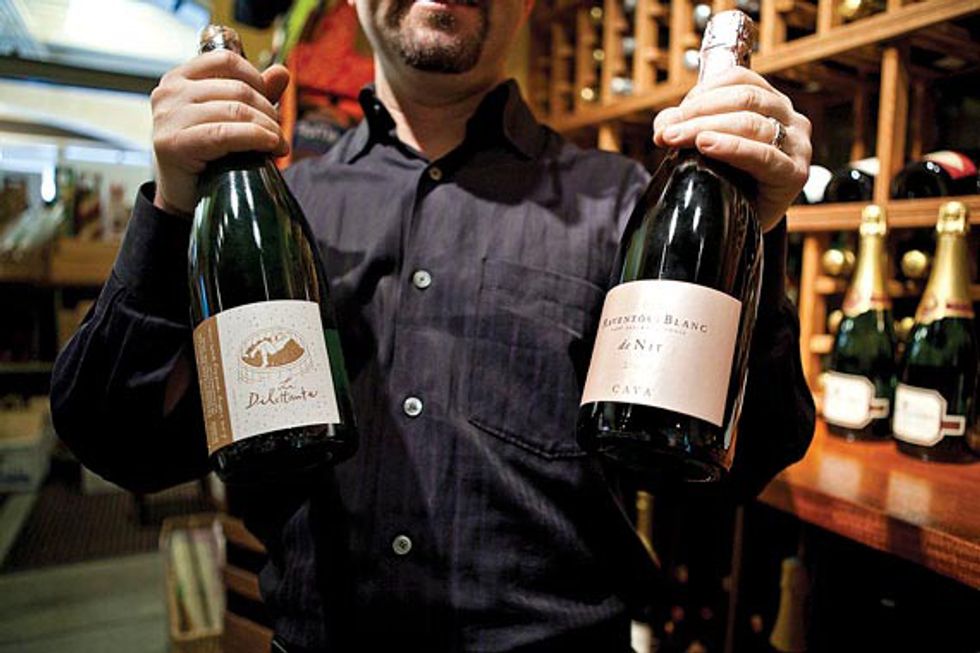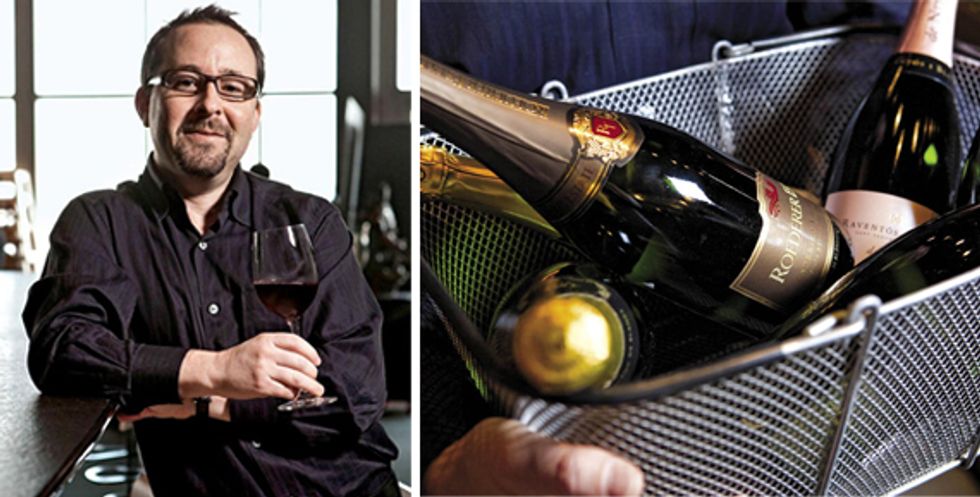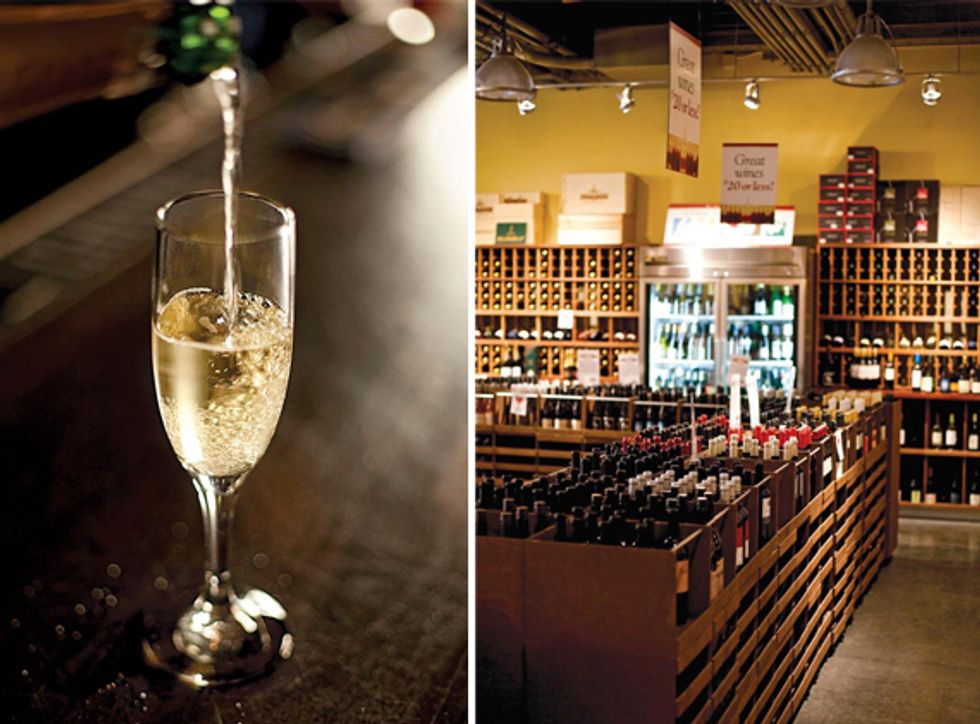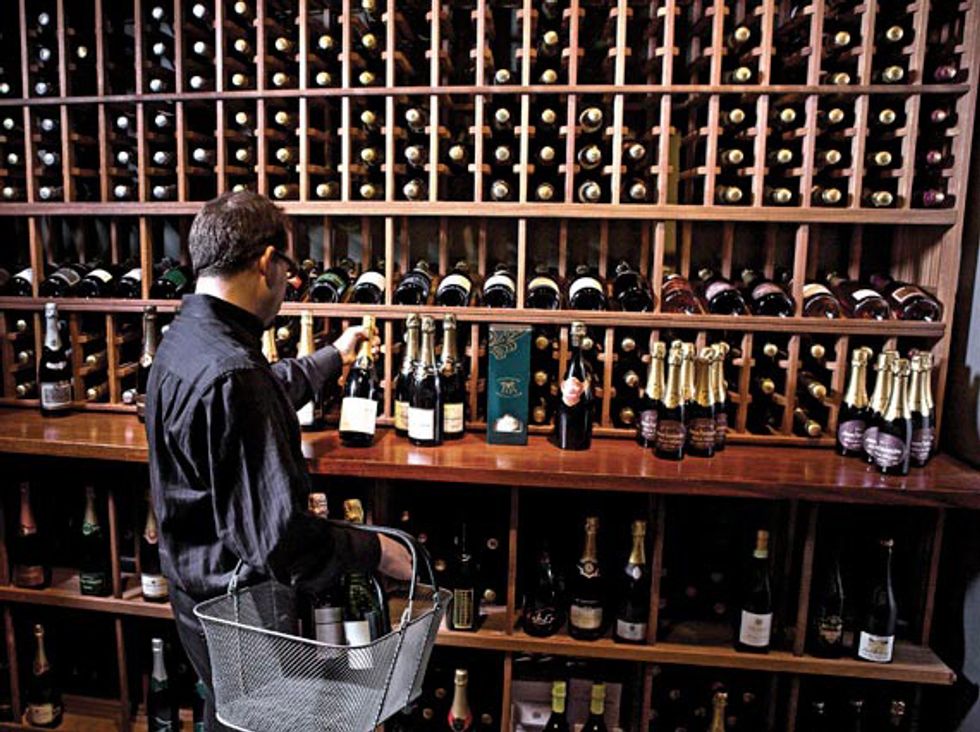So a guy walks into a wine shop and thinks: ’Tis the season for Champagne—until he looks at the price. He gulps and regroups: ’Tis the season for sparkling wine!
(Left) Paul Einbund is wine director at The Slanted Door; (Right) Sparklers Galore
I’ll toast to that. The cost of Champagne (the real stuff from said region of France) is going up quicker than a balloon in a Pixar flick. Wine regions in France are regulated by the Appellation d’Origine Contrôlée (better known as the AOC), which controls how much land can be planted and still called Champagne. In this case, they’ve just plain run out of land. Add to that the weak exchange rate, and the cost of Champagne is higher than ever.
(Left) Bubbly poured at the Ferry Plaza Wine Merchant; (Right) the FPWM's stocked shelves
Luckily, sparkling wine producers from every other region of the world have seized this moment to shine. In Spain, cava is made in many different styles, but the best examples have small bubbles and balance freshness with creaminess. The wines that sparkle in Italy—or more specifically the Veneto region of Italy—are called Prosecco and have larger bubbles (better for cocktails) and a focus on the fruit. They’re also great as aperitifs and with dishes that have a bit of fruitiness or sweetness. The Loire Valley of France, from where the famous Sancerre hails, also produces some crazy-good sparkling wines. I like the wines made out of Chenin Blanc, with its soft texture and flavors of pine trees and honey.
Perhaps my true favorite non-Champagne sparkling wines are found in Austria and Germany, where they call them Sekt (pronounced zekt). Sometimes they’re made with Riesling or indigenous grapes, though the more traditional sparkling wine grapes (Chardonnay, Pinot Noir, and Pinot Meunier) are used as well. With tiny bubbles and a creamy feeling in the mouth, Sekt drinks more like wine that just happens to have bubbles. Not to mention the price is about half of a comparable bottle of Champagne, giving you one more thing to celebrate.
Three Hallmarks of a Good Sparkler:
Fresh: Bright and alive in your mouth, fruity but not necessarily sweet.
Precise: On the tongue, the wine should feel direct and penetrating. Precision is more about the acid, which is mandatory for good sparkling wines.
Sparkly: Small bubbles are a sign of high-quality wine, but larger bubbles are great for cocktails.
Sparklers From Around the World:
Raventos Cava
There are several different bottlings of this Spanish wine in several price ranges, but all deliver the goods in richness and creaminess.
Breton Vouvray Pétillant La Dilettante
This sparkling Chenin Blanc from the Loire Valley is soft and round, and with its gentle bubbles, you can drink it all night. Beware. ($20)
Domaine de la Taille Aux Loups Triple Zero
This wine from the Loire is the epitome of precision, crisp and focused like a laser beam sighted on your palate. ($22)
J. Laurens Cremant
de Limoux
Simply great to drink. It may not be as full in the mouth as a true Champagne, but I can’t think of a wine with more bang for the buck in the sparkling world. ($13)
Sommariva Prosecco
A classic example of Prosecco’s big bubbles. With lots of fresh melon flavors, this wine is perfect as an aperitif or mixed with fresh fruits and juices. ($12)
Brundlmayer Sekt
One of my favorite wineries in Austria produces this wine, which could stand up to any sparkling wine in the world. A pleasure to drink because of its tiny bubbles and intense flavors. ($32)
Look for these wines at the Ferry Plaza Wine Merchant, Ferry Building Marketplace, (415) 391-9400, fpwm.com; or at The Wine House, 129 Carolina St., (415) 355-9463, wineaccess.com
























